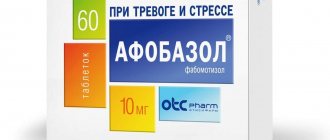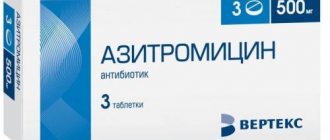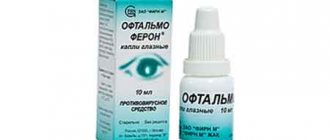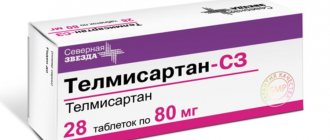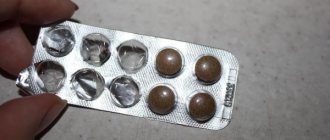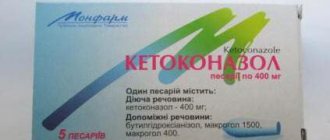Various kinds of infectious diseases, unfortunately, can be very dangerous for humans. Often such ailments are rapid in nature and lead to the development of all sorts of serious complications. Diseases of this type are treated using mainly antibacterial agents. The modern pharmacological industry produces, of course, many such drugs. And Rovamycin is considered one of the most effective drugs in this group. The active substance in such tablets can be included in different dosages. Further in the article we will look at how you should take Rovamycin (3 million IU).
Release form and composition of the drug
This modern medicine is supplied to pharmacies and clinics under the trade name “Rovamycin”. In Russia, this drug is produced mainly only in the form of powder and tablets. Occasionally you can find a solution of this drug for injection on sale. In European countries, this product is marketed in a wider range of release forms. Moreover, the international name of this drug is “Spiramycin”.
In our country, the most popular form of “Rovamycin” is tablets of 3 million IU. Less commonly you can find a drug on sale for 1.5 million me. In any case, the main active substance of this medicine is the natural antibiotic spiramycin. Also, the composition of the Rovamycin tablets 3 million me and 1.5 million me includes the following additional substances:
- colloidal anhydrous silica;
- magnesium stearate;
- corn starch;
- cellulose, etc.
The drug 3 million me is supplied to the market in cardboard boxes in plates of 10 tablets. The 1.5 million me option is packaged in the same way, but 8 tablets each. The color of the tablets of this medicine is white with a cream tint. Their shape is biconvex. On one side of the 3 million me tablets there is an engraving ROVA 3.
How to use?
Rovamycin is available in the form of tablets for oral administration. There are two versions of the drug on sale with different dosages of the active substance (in millions of international units):
- 1,5.
- 3,0.
The choice of dosage and duration of the course is carried out individually; most often, a standard regimen is used, in which the daily dose is 6.0–9.0 million IU, divided into 2-3 doses. In the second trimester, it is allowed to prescribe Rovamycin in combination with sulfonamides. But in any case, using this drug for self-medication is prohibited.
What effect does the drug have on the human body?
Rovamycin belongs to the macrolide group of antibiotics. Once in the human body, its active substance penetrates primarily into phagocytes and begins to accumulate in them. Its concentration in immune cells in the body during treatment can be very high. This is precisely what explains the high effectiveness of Rovamycin on harmful intracellular bacteria. The therapeutic effect of this drug manifests itself very quickly in most cases. In the human body, this drug almost instantly destroys strains of Streptococcus, Branhamella catarrhalis, Bacillus cereus, Campylobacter, Coxiella and many others.
This remedy helps patients quickly. But some types of bacteria, unfortunately, can be resistant to this medicine. Therefore, you should never take this drug uncontrolled. This can lead to time being lost and the disease moving into a difficult-to-treat stage. Bacteria resistant to Rovamycin are, for example, Enterobacteria, Nocardia asteroids, Fusobacterium, etc.
This drug is excreted from the human body mainly with bile. But a certain amount of it during the course of treatment can also be found in the patient’s urine and feces. The half-life of Rovamycin from plasma is 8 hours.
pharmachologic effect
Antibiotic from the macrolide group. The mechanism of antibacterial action is due to inhibition of protein synthesis in the microbial cell due to binding to the 50S ribosomal subunit.
Sensitive microorganisms (MIC<1 mg/l): gram-positive aerobes - Bacillus cereus, Corynebacterium diphtheriae, Enterococcus spp., Rhodococcus equi, Staphylococcus spp. (methicillin-sensitive and methicillin-resistant strains), Streptococcus B, unclassified streptococcus, Streptococcus pneumoniae, Streptococcus pyogenes; gram-negative aerobes - Bordetella pertussis, Branhamella catarrhalis, Campylobacter spp., Legionella spp., Moraxella spp.; anaerobes - Actinomyces spp., Bacteroides spp., Eubacterium spp., Mobiluncus spp., Peptostreptococcus spp., Porphyromonas spp., Prevotella spp., Propionibacterium acnes; various - Borrelia burgdorferi, Chlamydia spp., Coxiella spp., Leptospira spp., Mycoplasma pneumoniae, Treponema pallidum, Toxoplasma gondii.
Moderately sensitive microorganisms (the antibiotic is moderately active in vitro at antibiotic concentrations at the site of inflammation ≥ 1 mg/l, but < 4 mg/l): gram-negative aerobes - Neisseria gonorrhoeae; aerobes - Clostridium perfringens; different - Ureaplasma urealyticum.
Resistant microorganisms (MIC>4 mg/l; at least 50% of strains are resistant): gram-positive aerobes - Corynebacterium jekeium, Nocardia asteroides; gram-negative aerobes - Acinetobacter spp., Enterobacter spp., Haemophilus spp., Pseudomonas spp.; anaerobes - Fusobacterium spp.; different - Mycoplasma hominis.
Features of the medicine
Rovamycin is absorbed quite well in the body of patients, but, unfortunately, not completely. However, food intake does not affect the degree of absorption of this medicine. That is, you can take the drug both before, after, or during meals.
The peculiarity of this remedy, among other things, is that in the body of a pregnant woman it is not able to penetrate the placental barrier. That is, this drug is one of the few antibiotics that can be treated even when pregnant. However, Rovamycin, unfortunately, can still pass into breast milk. That is, you should not take it during lactation.
Is the use of Rovamycin allowed or not during pregnancy?
It is known that the use of antibiotics during pregnancy is undesirable. Sometimes the negative effect on the fetus exceeds the benefit of taking the drug and leads to disturbances in the development of the baby. However, in some cases the use of antibiotics becomes necessary, for example, for the treatment of toxoplasmosis.
- "Rovamycin" refers to drugs that are allowed even in the first trimester of pregnancy, but only for strict indications. Thanks to the studies, it was revealed that when treating toxoplasmosis with Rovamycin, there is no obvious inhibitory effect on the fetus, and the course of the disease is such that it is in the early stages that severe complications are most likely.
- In Western countries, this drug has been used to treat toxoplasmosis in pregnant women for more than 30 years. Therefore, if there is a desire and opportunity to save the child, the use of the antibiotic Rovamycin often becomes practically the only option.
- In addition to toxoplasmosis, ureaplasmosis poses a major threat during pregnancy. The pathology may not be accompanied by a clinical picture for several years. But during pregnancy, a sharp decrease in immunity occurs, which activates a latent disease. Ureaplasmas can disrupt the development of the fetus, causing intrauterine infectious processes, or lead to infection of the child during labor.
- But during lactation, treatment with antibiotics is strictly prohibited, since they easily penetrate into the milk and, accordingly, into the baby’s body. If there is a need for a course of antibiotic treatment, at this time the baby should be weaned from the breast using artificial milk formula. After completing the course of taking the drug, the woman can return to natural feeding.
Indications
This drug can be used by doctors to treat a wide variety of infectious diseases caused by species of bacteria that are sensitive to it. Among ENT ailments, Rovamycin (3 million units) usually helps well with:
- tonsillitis;
- sinusitis.
This medicine can also be prescribed to patients with skin infectious diseases:
- ecthyma;
- dermatocellulitis;
- erysipelas;
- dermatosis, etc.
According to the instructions for use, Rovamycin (3 million IU) can also be prescribed for the treatment of the following ailments of the respiratory system:
- pneumonia;
- chronic bronchitis (with exacerbations).
Rovamycin also works effectively against certain diseases of the reproductive system. This medicine is also often prescribed to pregnant women who develop toxoplasmosis.
In addition to the treatment itself, in some cases this drug may be prescribed to patients for the prevention of diseases. For example, in this way it is often used when there is a risk of a person developing staphylococcal meningitis. This serious purulent disease, unfortunately, often develops in young children and is characterized by a rapid course. Of course, sometimes such meningitis is diagnosed in adults.
What are the contraindications?
This medicine usually does not have too serious a negative effect on the body of patients. However, Rovamycin (3 million IU) can be prescribed to patients, like any other antibiotic, of course, not in all cases.
Contraindications to the use of this medicine are:
- hypersensitivity to any of its components;
- deficiency of the enzyme glucose-6-phosphate dehydrogenase (there is a risk of developing acute hemolysis);
- the risk of prolongation of the QT interval, both acquired and congenital.
Since this drug passes into breast milk, it, as already mentioned, should not be used to treat nursing women. For such patients, doctors usually replace it with some analogue. In some cases, if treatment with this particular drug is necessary, the child can be transferred to artificial feeding.
Rovamycin tab.p.o.3000000ME No. 10 39564
Description
Tablets with a dosage of 1.5 million IU: biconvex round tablets, film-coated, white or white with a creamy tint. One side is engraved "RPR 107". Tablets with a dosage of 3 million IU: biconvex round tablets, coated, white with a creamy tint. On one side there is an engraving “ROVA 3”. Absorption of spiramycin occurs quickly, but not completely, with great variability (from 10 to 60%). Distribution. After oral administration of spiramycin at a dose of 6 million IU, Cmax in plasma is about 3.3 mcg/ml. After intravenous administration at a dose of 1.5 million IU by one-hour infusion, Cmax in plasma is 2.3 mcg/ml. With the administration of 1.5 million IU of spiramycin every 8 hours, the equilibrium concentration is achieved by the end of the second day (Cmax - about 3 μg/ml and Cmin - about 0.5 μg/ml). Spiramycin penetrates and accumulates in phagocytes (neutrophils, monocytes, peritoneal and alveolar macrobacteriophages). In humans, drug concentrations inside phagocytes are quite high. These properties explain the effects of spiramycin on intracellular bacteria. Spiramycin does not penetrate into the cerebrospinal fluid, but diffuses into breast milk. Penetrates the placental barrier (the concentration in the fetal blood is approximately 50% of the concentration in the maternal blood serum). Concentrations in placental tissue are 5 times higher than corresponding concentrations in serum. Distribution volume: approximately 383 liters. The drug penetrates well into saliva and tissues (concentration in the lungs - 20-60 µg/g, tonsils - 20-80 µg/g, infected sinuses - 75-110 µg/g, bones - 5-100 µg/g). 10 days after the end of treatment, the concentration of the drug in the spleen, liver and kidneys ranges from 5 to 7 mcg/g. Plasma protein binding is low (approximately 10%). Biotransformation. Spiramycin is metabolized in the liver to form active metabolites with an unknown chemical structure. Excretion. It is excreted mainly in bile (concentrations are 15–40 times higher than in serum). Renal excretion of active spiramycin is (from the administered dose): when taken orally - about 10%; with intravenous administration - about 14%. T1/2 after oral administration of 3 million IU of spiramycin is approximately 8 hours; after intravenous administration of 1.5 million IU of spiramycin by one-hour infusion - 5 hours. It may be prolonged in elderly patients. In patients with impaired renal function, no dose adjustment of spiramycin is required. The antibacterial spectrum of spiramycin is as follows: - usually sensitive microorganisms: minimum inhibitory concentration (MIC) ≤1 mg/l. More than 90% of strains are sensitive: streptococci (including Streptococcus pneumoniae), methicillin-sensitive and methicillin-resistant staphylococci, enterococci, Rhodococcus equi, Branhamella catarrhalis, Bordetella pertussis, Helicobacter pylori, Campylobacter jejuni, Legionella spp., Corynebacterium diphtheriae , Moraxella spp., Mycoplasma pneumoniae, Coxiella spp., Chlamydia spp., Treponema pallidum, Borrelia burgdorferi, Leptospira spp., Propionibacterium acnes, Actinomyces, Eubacterium, Porphyromonas, Mobiluncus, Bacteroides, Peptostreptococcus, Prevotella, Toxoplasma gondii (in vitro and in vivo.), Bacillus cereus; - moderately sensitive microorganisms: the antibiotic is moderately active in vitro. Positive results can be observed when antibiotic concentrations at the site of inflammation are higher than the MIC (see the “Pharmacokinetics” field). Neisseria gonorrhoeae, Clostridium perfringens, Ureaplasma urealyticum; - resistant microorganisms (MIC >4 mg/l): at least 50% of strains are resistant: methicillin-resistant staphylococci, Enterobacter spp., Pseudomonas spp., Acinetobacter, Nocardia asteroides, Fusobacterium, Haemophilus spp., Mycoplasma hominis. Tablets U Patients with liver disease should periodically monitor its function during treatment with the drug.
Compound
Film-coated tablets 1 tablet. spiramycin 1.5 million IU 3 million IU excipients: colloidal anhydrous silicon; magnesium stearate; pregelatinized starch; hydroxypropylcellulose; croscarmellose sodium (sodium carboxymethylcellulose); MCC in blister 8 (for tablets of 1.5 million IU) and 5 pcs. (for tablets 3 million IU); There are 2 blisters in a cardboard box. Lyophilized powder for the preparation of solution for intravenous administration 1 fl. spiramycin 1.5 million IU in a box 1 bottle.
Application
Tablets infectious diseases caused by sensitive microorganisms, especially ENT organs (including tonsillitis, sinusitis), lower respiratory tract (acute community-acquired pneumonia, including pneumonia caused by atypical microorganisms, exacerbation of chronic bronchitis); infections of the periodontium, skin and soft tissues (erysipelas, secondary infected dermatoses, impetigo, ecthyma, erythrasma); infectious diseases of bones and joints; infectious diseases of the reproductive system (non-gonorrheal nature); prevention of meningococcal meningitis in cases where rifampicin is contraindicated: eradication of Neisseria meningitidis in the nasopharynx. Spiramycin is not used for the treatment of meningococcal meningitis, but is recommended for prophylaxis in patients after treatment, as well as in persons who had contact with the patient 10 days before his hospitalization; prevention of relapses of acute articular rheumatism in patients with an allergic reaction to penicillins; toxoplasmosis, incl. in pregnant women. Lyophilized powder for the preparation of a solution for intravenous administration of acute pneumonia; exacerbation of chronic bronchitis; infectious-allergic asthma. If necessary, it is possible to use Rovamycin® during pregnancy (spiramycin has no teratogenic effect). During treatment, it is necessary to stop breastfeeding (spiramycin may pass into breast milk). For tablets, there is an additional decrease in the risk of transmitting toxoplasmosis to the fetus during pregnancy from 25 to 8% when used in the first trimester, from 54 to 19% in the second and from 65 to 44% in the third trimester. For tablets From the gastrointestinal tract: nausea, vomiting, diarrhea and very rare cases of pseudomembranous colitis (<0.01%). Isolated cases of ulcerative esophagitis and acute colitis have been described. The possibility of developing acute damage to the intestinal mucosa in patients with AIDS when using high doses of spiramycin for cryptosporidiosis was also noted (2 cases in total). From the liver: very rarely (<0.01%) - changes in liver function tests and the development of cholestatic hepatitis. From the hematopoietic organs: very rarely (<0.01%) - the development of acute hemolysis (see “Contraindications”) and thrombocytopenia. From the cardiovascular system: possible prolongation of the QT interval on the ECG. Hypersensitivity reactions: skin rash, urticaria, itching; very rarely (<0.01%) - angioedema, anaphylactic shock. For lyophilized powder for the preparation of a solution for intravenous administration Rarely occurring and moderately severe irritation along the vein, which only in exceptional cases may require discontinuation of treatment. Skin allergic reactions. Other: isolated cases of vasculitis, including Henoch-Schönlein purpura. Common to both dosage forms From the peripheral nervous system and central nervous system: transient paresthesia. Common to both dosage forms Combinations of levodopa and carbidopa: due to inhibition of carbidopa absorption, the plasma level of levodopa may decrease. When co-administering spiramycin, clinical monitoring and some modification of the dosage of levodopa is necessary. Lyophilized powder for the preparation of solution for intravenous administration Should be used with caution with ergot alkaloids. Development of ventricular arrhythmias, in particular “torsade de pointes”. This severe arrhythmia can be caused by a number of antiarrhythmic and non-antiarrhythmic drugs. Hypokalemia that occurs when using potassium-sparing diuretics, stimulant laxatives, amphotericium B (iv), corticosteroids, tetracosactide is a predisposing factor, as is bradycardia with congenital or acquired prolongation of the QT interval. Intravenous administration of spiramycin can lead to the development of torsade de pointes. When spiramycin is administered intravenously with drugs that cause bradycardia (calcium channel blockers: diltiazem, verapamil, beta-blockers, clonidine, guanfacine, digitalis alkaloids, cholinesterase inhibitors - donepezil, rivastigmine, tacrine, ambenonium chloride, galantamine, pyridostigmine, neostigmine), and Also, with drugs that reduce the level of potassium in the blood (potassium-sparing diuretics, stimulant laxatives, amphotericin B (iv), corticosteroids, mineralocorticoids, tetracosactide), the risk of ventricular arrhythmias, in particular “torsade de pointes”, increases. Hypokalemia should be eliminated before prescribing the drug. It is recommended to carry out clinical and ECG monitoring, as well as monitoring electrolyte levels. Tablets Orally. Adults - 2-3 tablets. 3 million ME or 4–6 tablets. 1.5 million ME (i.e. 6–9 million ME) per day in 2–3 doses. The maximum daily dose is 9 million ME. Children (with a body weight of 20 kg or more) - 150–300 thousand ME/kg/day, divided into 2–3 doses. The maximum dose for children is 300 thousand ME/kg/day. Tablets of 3 million ME are not used in children. Prevention of meningococcal meningitis: adults - 3 million IU 2 times a day for 5 days; children - 75 thousand IU 2 times a day for 5 days. Patients with impaired renal function due to low renal excretion do not require dose changes. Lyophilized powder for the preparation of a solution for intravenous administration. For adults only: 1.5 million IU every 8 hours (4.5 million IU/day) by slow infusion. In case of severe infections, the dose may be doubled. As soon as the patient's condition allows, treatment should be continued by taking the drug orally. The contents of the bottle are dissolved in 4 ml of water for injection. The drug is administered slowly intravenously over 1 hour in at least 100 ml of 5% dextrose (glucose). The duration of treatment depends on the severity and characteristics of the infectious process, the sensitivity of the microflora and is determined individually by the attending physician. After dilution, the solution is stable for 12 hours when stored at room temperature. There are no known cases of spiramycin overdose. Lyophilized powder for the preparation of a solution for intravenous administration. There have been cases of QT prolongation following intravenous administration of spiramycin in a patient at risk for QT prolongation. Possible symptoms of overdose include (for both forms): nausea, vomiting, diarrhea. There is no specific antidote. If an overdose of spiramycin is suspected, symptomatic therapy is recommended. For both dosage forms: hypersensitivity to spiramycin and other components of the drug; use in patients with deficiency of the enzyme glucose-6-phosphate dehydrogenase (due to the possible occurrence of acute hemolysis). For tablets additionally Children under 3 years of age - for tablets of 1.5 million IU and up to 18 years of age - for tablets of 3 million IU. For the injection form Children and adolescents under 18 years of age (for this dosage form), in patients with a risk of prolongation of the QT interval (congenital and acquired), when combined with drugs that can cause ventricular arrhythmias (class Ia antiarrhythmics - quinidine, hydroquinidine, disopyramide ; class III - amiodarone, sotalol, dofetilide, ibutilide); a benzamide group neuroleptic (sultopride), some phenothiazine neuroleptics (thioridazine, chlorpromazine, levomepromazine, trifluoperazine, cyamemazine, amisulpride, tiapride, haloperidol, droperidol, pimozide); halofantrine, pentamidine, moxifloxacin and other drugs, such as: bepridil, cisapride, difemanil, erythromycin IV, mizolastine, vincamine IV. With caution: obstruction of the bile ducts; liver failure.
Possible product names
- Rovamycin tab.p.o.3000000IU No. 10
- ROVAMYCIN 3 MILLION. M.E. TABLE No. 10
- ROVAMYCIN 3 MILLION IU N10 TABLE P/PLEN/COAT
- ROVAMYCIN TABLE. P/O PLEN 3000000 IU X10
- ROVAMYCIN TAB. P/O PLEEN. 3 MILLION. ME No. 10
- ROVAMYCIN 3 MILLION IU TAB. P/PL/OB. X10
- (Rovamycine) Rovamycin tab.po.3000000IU No. 10
In what cases can it be prescribed with caution?
Only a very small part of the active substance “Rovamycin” (3 million IU) is excreted from the human body with urine. Therefore, unlike some other antibiotics, dosage adjustments of this drug are usually not made if a patient has any kidney problems.
When patients are diagnosed with certain types of diseases, this drug may be prescribed to them with caution. Most often, patients with bile duct obstruction undergoing treatment with Rovamycin (3 million IU) are under the special supervision of doctors. Also, with great caution, this medicine is prescribed to patients with liver problems.
special instructions
During the period of use of Rovamycin in the presence of liver diseases, it is necessary to monitor its functional state.
If at the beginning of therapy the patient experiences the appearance of pustules and generalized erythema, accompanied by high body temperature, this may be a sign of acute generalized exanthematous pustulosis. If such a reaction develops, the use of the drug must be discontinued (both in monotherapy and in combination).
Intravenous infusions should be stopped immediately if symptoms of any allergic reaction are observed.
When administering the solution to patients suffering from diabetes, due to the use of 5% dextrose as a solvent, it is necessary to control the level of glucose in the blood.
Tablets at a dose of 3 million IU are not used in children due to the difficulties encountered when swallowing them and the threat of airway obstruction due to the large diameter of the tablet.
There is no information confirming the negative effect of Rovamycin on the ability to drive a car or other complex mechanisms. At the same time, the severity of the patient’s condition should be taken into account, which can negatively affect attention and the speed of psychomotor reactions. The final decision on the ability to drive vehicles and other machinery is made by the attending physician.
Dosage of the drug for adults
Of course, the treatment regimen with Rovamycin 3 million me, like any other antibiotic, should be developed by the attending physician. The dosage of this drug depends on the specific disease and the characteristics of the patient’s body.
Most often, patients drink this drug (3 million IU) 2-3 times a day when treating infectious diseases. In this case, patients take 1 tablet each time. To prevent staphylococcal meningitis, Rovamycin (3 million IU) is used in most cases, one tablet in 2 doses with a 12-hour break.
What Vimicin contains
The composition of the drug includes: - ordinary barley (extract); — spirulina (extract); — rosehip (fruit extract); — acerola (fruit extract); — horsetail (herb extract); — saphora japonica (fruit and flower extract); - fucus fucusvesiculosus (extract). In 2 capsules of Vimicin: 1. Microelements: - zinc - 15 mg. (100% RDA - recommended daily dose); - selenium - 70 mcg. (100%); - iron - 0.2 mg. (1.43%); - chromium - 50 mcg. (100%); — iodine — 23 mcg. (15.3%); - copper - 1 mg. (100%); — silicon — 4.5 mg. (15%); — manganese — 2 mg. (100%). 2. Vitamins: - vitamin A - 1 mg. (125%); — vitamin C — 12 mg. (20%); — vitamin E — 10 mg. (100%); — vitamin D — 5 mcg. (100%).
Instructions for "Rovamycin" (3 million me): dosages for children
It is possible to treat various kinds of infectious diseases using this drug not only in adults. This remedy is also prescribed to children quite often. Of course, reduced dosages are used to treat such patients.
Usually, for infectious diseases, children are prescribed no more than 150-300 thousand me of this drug per kilogram of body weight per day. In this case, such a dose must be divided into two or three doses. Children can drink Rovamycin in an amount of no more than 300 thousand me per day. That is, for such patients, tablets for 3 million me have to be divided into several parts.
Prevention of meningitis using Rovamycin (3 million), according to the instructions, can, of course, be carried out for children. In this case, doctors usually prescribe 75 thousand IU of this medicine per day to young patients in two doses with a 12-hour break.
What side effects can it cause?
Despite the fact that Rovamycin does not belong to the group of very severe drugs, in some cases it can cause negative reactions in patients undergoing treatment with it. The following side effects are sometimes observed in patients taking this medicine:
- nausea, diarrhea, vomiting;
- pseudomembranous colitis;
- paresthesia;
- anemia;
- hives, itching.
In very rare cases, after taking Rovamycin (3 million IU), patients even develop anaphylactic shock. This, in turn, unfortunately, can lead to death.
Properties of Vimicin
— Common barley extract. Rich in vitamins B, A, E, D, various microelements (calcium, magnesium, potassium, phosphorus, selenium, zinc, chromium, fluorine, manganese, sulfur, nickel...), enzymes, fiber. Such a composition rich in useful substances has led to the use of barley extract for various gastrointestinal diseases, to strengthen the immune system, and for skin problems. Has diuretic and anti-inflammatory properties. — Spirulina extract. Spirulina is known for its antitumor properties. It contains 18 amino acids (including 8 essential ones), vitamins B and E. This component of Vimicin, thanks to the chlorophyll it contains, is a powerful antioxidant; it neutralizes the harmful effects of free radicals on the body, thereby slowing down the processes of cellular aging. Among other things, spirulina helps remove toxins and various wastes from the body, improves the functioning of the cardiovascular system and brain (this is due to the fatty acids in its composition), normalizes metabolism, which has a positive effect on a person’s weight and the condition of his skin. — Rosehip fruit extract. It has long been known as a means to strengthen the immune system and support the cardiovascular system. This is thanks to ascorbic acid, which is contained in huge quantities in rose hips. Among other things, this component of Vimicin contains: flavonoids (quercetin, kaempferol), catechins, carotene, vitamins B2 and K1. All these components of rose hips determine its antioxidant properties and its effectiveness in infectious diseases of various etiologies; it activates regenerative processes, participates in the production of amino acids, many enzymes, collagen, steroid hormones, improves the condition of blood vessels and normalizes liver function, and is an excellent anti-sclerotic agent. — Acerola fruits. Vimicin contains acerola fruit extract. For most of us, this means nothing. But this component is a powerful source of vitamin C (100 g of fruit contains 1400-2500 mg of this vitamin), which is a powerful antioxidant. Thanks to this vitamin, cellular aging slows down, the level of “bad” cholesterol decreases, tissue regeneration processes accelerate, the walls of blood vessels are strengthened, anti-infective immunity increases, appetite is restored, and the body’s energy increases. Among other things, acerola fruits contain B vitamins and provitamin A, which improves metabolism. - Horsetail. It contains flavonoids, alkaloids, organic acids, tannins, mineral salts, resins, saponins, silicic acid, fatty oil... Horsetail is used for atherosclerosis, kidney inflammation, it is effective for urolithiasis, and even for tuberculosis, removes lead from the body, helps with heart failure and heart defects. — Saphora japonica extract. This is another very valuable component included in Vimicin. Here are its main properties: - immunostimulating; - less antioxidant; — capillary stabilizing; - vascular strengthening; - hemostatic; - stimulating blood circulation; - antibacterial; - anthelmintic; - antiseptic; - decongestants; - anti-sclerotic; - painkillers; - antitumor; - hypotensive; - regenerating. Used in complex therapy and to prevent pathologies of the respiratory system (bronchitis, asthma, tuberculosis), stomach and duodenal ulcers, atherosclerosis, hypertension, various diseases of the heart and blood vessels, thyroid gland, liver, autoimmune diseases, diabetes mellitus, vascular diseases and some types of oncology. — Fucus fucusvesiculosus extract. This component of Vimicin is known primarily as a powerful remedy for restoring the functioning of the thyroid gland. Among other things, bladderwrack removes heavy metal salts and radionucleids from the body, which are one of the causes of cancer. Fucus contains polysaccharides, amino acids (essential), vitamins B, A, E, polyphenols and trace elements (zinc, iron, sodium, potassium, copper...). Bladderwort has immunomodulatory, antiviral, cardioprotective, antioxidant, prebiotic, and vascular-strengthening properties.
What happens in case of a drug overdose?
The use of Rovamycin allows you to get rid of many, often quite dangerous, infectious diseases. However, you should, of course, take this medicine strictly in the dosages prescribed by your doctor. If a patient takes too many of these pills, he may experience serious health problems.
In case of an overdose of Rovamycin, the patient is recommended to determine the QT interval. Taking too much of this drug may be especially dangerous for patients with:
- hypokalemia;
- congenital QT prolongation.
An overdose of Rovamycin is also very dangerous for people undergoing treatment using drugs that cause ventricular flutter or prolong the QT interval.
Drug interactions
With intravenous infusion of Rovamycin solution with the simultaneous use of drugs that cause bradycardia (beta-blockers, verapamil, diltiazem, digitalis glycosides, guanfacine, clonidine, cholinesterase inhibitors: neostigmine, pyridostigmine, galantamine, ambenonium chloride, tacrine, rivastigmine, donepezil), as well as drugs , reducing the level of potassium in the blood (amphotericin B (intravenously), tetracosactide, potassium-sparing diuretics, glucocorticosteroids, mineralocorticoids, laxatives, stimulants), the threat of developing ventricular arrhythmias, in particular of the “pirouette” type, is aggravated. Before starting the use of Rovamycin, it is necessary to eliminate hypokalemia, and during therapy it is recommended to monitor the clinical condition, electrolyte levels and ECG monitoring.
Spiramycin inhibits the absorption of carbidopa, thereby reducing plasma concentrations of levodopa. With this combination, clinical monitoring and, if necessary, dose adjustment of levodopa are necessary.
When using antibiotics, it is possible to increase the activity of indirect anticoagulants.
Analogues of the drug
In some cases, instead of Rovamycin, doctors may prescribe other drugs with a similar therapeutic effect to patients. The most popular synonyms of this medicine (drugs with the same active substance) are:
- "Spiramycin-Vero";
- "Spiramisar".
In terms of activity spectrum, an analogue of Rovamycin (3 million me) is Macropen. The main active ingredient of this drug is midecamycin. Like Rovamycin, this antibiotic belongs to the group of macrolides. This medicine can be prescribed to both adults and children. However, in case of renal failure, unlike Rovamycin, it cannot be used to treat infectious diseases. This medicine may be prescribed to pregnant and breastfeeding women with caution. In such cases, the doctor determines what is more dangerous for the child - the mother’s disease itself or the harm from the antibiotic entering his body.
Reviews of "Rovamycin" (3 million units)
Patients consider the advantages of this drug, first of all, to be that it treats various types of infectious diseases quite effectively. For example, judging by the reviews available on the Internet, this remedy helps get rid of a cold in just a couple of days. Of course, one of the main advantages of Rovamycin, according to patients, is that, unlike many other drugs, it can be taken during pregnancy. Judging by reviews from the Internet, treatment with this medicine does not have any effect on the health of children in the future.
Patients consider some of the disadvantages of Rovamycin to be its rather high cost. However, doctors, like many patients, strongly do not recommend changing this remedy to any other, cheaper antibiotics (and especially during pregnancy). The price of Rovamycin is high, but it has virtually no toxic effect on the human body. In addition, judging by the reviews of patients, this remedy rarely causes side effects.

